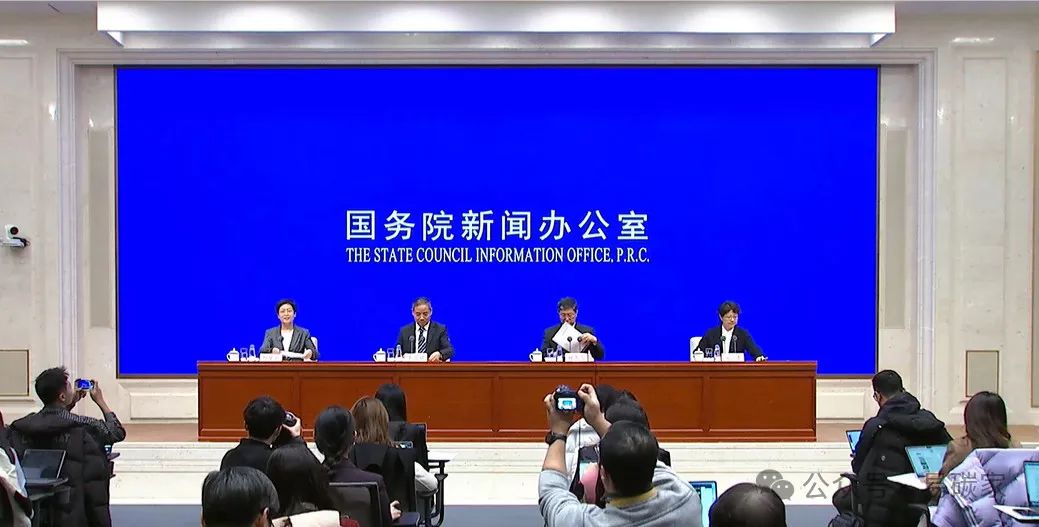Ministry of Industry and Information Technology: In 2024, 100 carbon footprint rules and standards will be formulated to accelerate the synergy of pollution reduction and carbon reduction
Recently, the State Council Information Office held a press conference on the development of industry and information technology in 2023. At the press conference, Tao Qing, spokesperson of the Ministry of Industry and Information Technology and director of the Operation Monitoring and Coordination Bureau, said that in 2024, it is planned to formulate about 100 carbon footprint rules and standards for key products. Vigorously develop green and low-carbon industries such as hydrogen energy and energy storage, improve the requirements for backward production capacity, energy consumption, environmental protection, etc., and accelerate the synergy of pollution reduction and carbon reduction.

According to Tao Qing, in 2023, in accordance with the deployment of the National Conference on the Promotion of New Industrialization, the Ministry of Industry and Information Technology will strive to promote the green and low-carbon transformation of industry and have achieved positive results.
First, the industrial structure continues to be optimized. The pace of green and low-carbon transformation and upgrading of the industry has accelerated, the backward production capacity in the steel, electrolytic aluminum, petrochemical and chemical industries, building materials and other industries has been further withdrawn, and the 390 million tons of crude steel production capacity of 78 iron and steel enterprises have completed the transformation of the whole process of ultra-low emissions, and the emission intensity of major pollutants and carbon dioxide in key industries has continued to decline.
The second is to accelerate the release of green kinetic energy. By the end of 2023, a total of 5,095 green factories have been established at the national level, accounting for more than 17% of the total output value of the manufacturing industry. The world's largest 16 MW offshore wind turbine with a single capacity has been successfully connected to the grid for power generation, and the output of the main links in the photovoltaic industry chain has remained the first in the world for many years. The development of green and intelligent coastal inland waterway vessels is accelerating. The first 10,000-ton green hydrogen industrialization demonstration project was completed and put into operation. The total output value of the environmental protection equipment manufacturing industry is expected to exceed 970 billion yuan.
Third, the use of energy resources is more efficient. The energy efficiency level of key energy-using industries continues to improve, and the proportion of production capacity of ethylene and other industries that have reached the energy efficiency benchmark level has exceeded 30%. The annual reuse rate of industrial water above designated size is expected to exceed 93%. The energy efficiency of information infrastructure has also been continuously optimized, and by the end of 2023, a total of 196 green data centers have been cultivated.
Fourth, the system of comprehensive utilization of industrial resources has been further improved. 239 enterprises for the comprehensive utilization of renewable resources such as scrap steel, waste paper, and waste power batteries for new energy vehicles were selected throughout the year, and the comprehensive utilization of waste power batteries for new energy vehicles was 225,000 tons, which basically realized the collection of all receivables. The home appliance industry has achieved a recycling rate of more than 80% for refrigerators, washing machines, air conditioners and other products through easy recycling and detachable design.
Tao Qing said that in the next step, we will continue to improve the green content of new industrialization and continue to polish the ecological background.
The first is to actively and steadily promote industrial carbon reduction. Coordinate and promote the carbon peak of industry and key industries, and carry out pilot projects for industrial digital carbon management. In 2024, it is planned to formulate about 100 carbon footprint rules and standards for key products. Vigorously develop green and low-carbon industries such as hydrogen energy and energy storage, improve the requirements for backward production capacity, energy consumption, environmental protection, etc., and accelerate the synergy of pollution reduction and carbon reduction.
The second is to focus on building a green manufacturing and service system. In-depth implementation of green manufacturing projects, in 2024, we will strive to cultivate 1,000 new green factories at the national level, improve the green manufacturing service system, and pilot the implementation of "enterprise green code". Give full play to the role of the national industry-finance cooperation platform, and actively create green consumption scenarios in new energy vehicles, green home appliances, etc.
The third is to vigorously improve industrial energy efficiency and water efficiency. Promote the improvement of energy efficiency in key industries and key energy-using equipment such as motors and transformers, accelerate the construction of industrial green microgrids in key industries and fields, release the recommended catalogue of energy-saving and water-saving technologies and equipment in the industrial field in 2024, and continue to create "leader" enterprises in energy efficiency and water efficiency.
Fourth, comprehensively promote the efficient use of resources. Accelerate the construction of a waste recycling system, and encourage qualified areas to create "zero-waste parks" and "zero-waste enterprises". Promote the standardized development of the comprehensive utilization of renewable resources, the comprehensive utilization of renewable resources of major varieties in 2024 should be stable and rising, improve the emerging solid waste utilization system, and strive to achieve an annual comprehensive utilization of more than 260,000 tons of waste power batteries.







